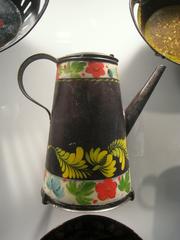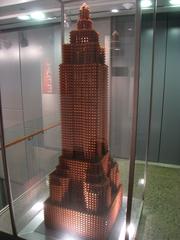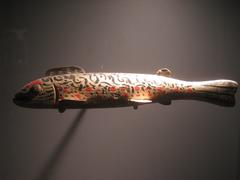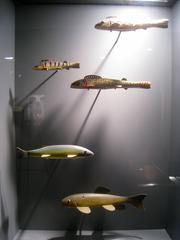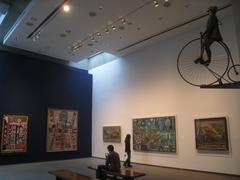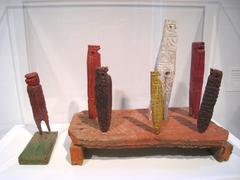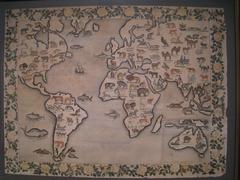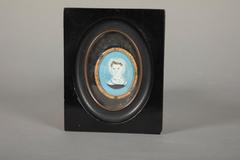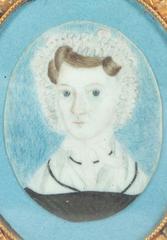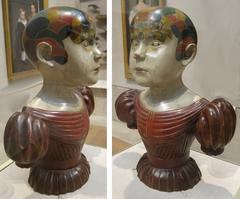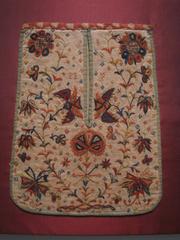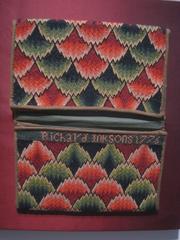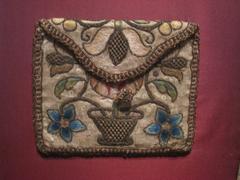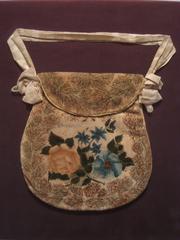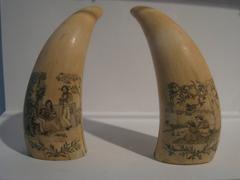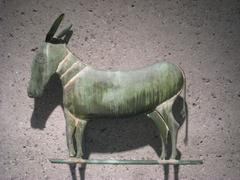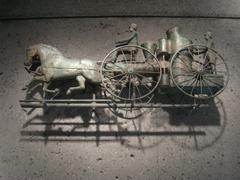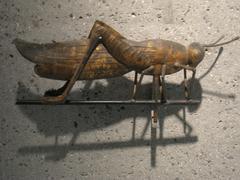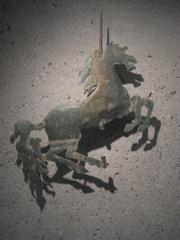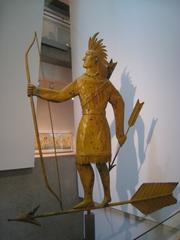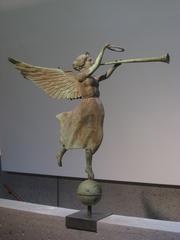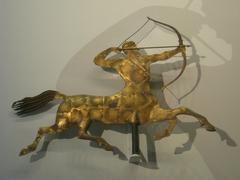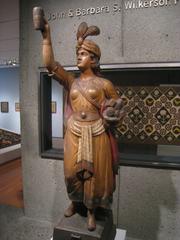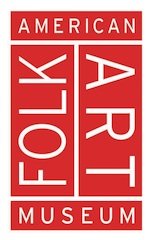
American Folk Art Museum Visiting Hours, Tickets, and Guide: New York City Historical Sites
Date: 14/06/2025
Introduction: History and Cultural Significance
The American Folk Art Museum (AFAM) in New York City is a unique cultural institution devoted to the preservation and celebration of folk and self-taught art traditions spanning more than four centuries. Founded in 1961 as the Museum of Early American Folk Arts, AFAM has expanded from its initial focus on American folk art to embrace global self-taught artists and a collection of over 8,000 works. The museum’s holdings—ranging from paintings and textiles to sculpture and decorative arts—highlight the creativity of artists often excluded from mainstream art discourse, serving as a vital repository for diverse cultural narratives (Go New York, WhichMuseum).
Currently housed at 2 Lincoln Square on Manhattan’s Upper West Side, adjacent to Lincoln Center for the Performing Arts, AFAM is known for its free admission policy, fostering accessibility and inclusivity for all visitors (folkartmuseum.org). The museum’s former home on West 53rd Street, designed by Tod Williams and Billie Tsien, is celebrated for its innovative architecture that echoes the handcrafted qualities of folk art (twbta.com, ArchDaily).
AFAM offers dynamic exhibitions, educational programs, guided tours, and special events that deepen appreciation of folk art’s historical and cultural contexts. Its commitment to accessibility and diversity is evident in its extensive library, community outreach, and inclusive programming (AFAM News, Holidify). For the most up-to-date information on visiting hours, tickets, and programs, always refer to the official website, as renovations or special events may affect access.
Table of Contents
- Historical Development of AFAM
- Collection Highlights and Cultural Significance
- Visitor Information: Hours, Tickets, and Accessibility
- Special Events and Guided Tours
- Leadership and Governance
- Institutional Resilience and Vision
- Recognition and Community Impact
- Architecture and Design
- Location, Visiting Hours, and Tickets
- Collections and Exhibitions
- Visitor Experience and Practical Information
- Educational Programs and Community Engagement
- Frequently Asked Questions (FAQ)
- Plan Your Visit and Stay Connected
Historical Development of the American Folk Art Museum
Founding and Early Years (1961–1980s)
Established in 1961 as the Museum of Early American Folk Arts, AFAM began with a modest exhibition near the Museum of Modern Art (MoMA) (Go New York). Its early mission was to showcase and preserve American folk art from the 18th and 19th centuries, bringing attention to art forms such as quilts, weathervanes, decoys, and painted furniture—creative expressions often overlooked by larger institutions.
Expansion and Broadening of Scope (1990s–2000s)
In the late 20th century, AFAM expanded its vision to include self-taught artists from around the world and from multiple centuries (Go New York). Its collection grew to over 8,000 objects, reflecting broader definitions of folk and outsider art (WhichMuseum). In 2001, AFAM opened a new, architecturally acclaimed building on West 53rd Street, signifying its elevated role in the art world.
Relocation and Modern Era (2011–Present)
Following financial challenges, AFAM sold its 53rd Street building in 2011 and moved to 2 Lincoln Square (WhichMuseum). The museum continues to thrive in its Upper West Side location, maintaining a robust schedule of exhibitions, educational programs, and community events (Go New York).
Collection Highlights and Cultural Significance
AFAM’s collection is one of the most significant in the United States, featuring over 8,000 objects, including:
- Paintings, drawings, and portraits
- Sculptures, carvings, and whirligigs
- Quilts and textiles
- Furniture, weathervanes, and decorative arts
- Photographs, books, and archival materials
The museum’s holdings span traditional American folk art, contemporary outsider art, and works from international self-taught artists. The library and archive—with around 10,000 volumes—serve as leading resources for folk art scholarship (Go New York), and AFAM’s inclusive programming highlights underrepresented voices.
Visitor Information: Hours, Tickets, and Accessibility
- Location: 2 Lincoln Square, Columbus Avenue at West 66th Street, New York, NY 10023
- Visiting Hours: Typically open Tuesday–Sunday, 11:00 AM–6:00 PM, but closed on Mondays and major holidays. As of summer 2025, the museum is temporarily closed for renovations. Check the official website for updates and reopening information.
- Admission: Free for all visitors (AFAM Visitor Guidelines).
- Accessibility: Fully wheelchair accessible, with elevators, accessible restrooms, and assistive listening devices.
- Transportation: Easily accessed via subway (1, 2, 3 lines at 66th Street–Lincoln Center) and nearby parking garages on Broadway and Columbus Avenue.
- Nearby Attractions: Lincoln Center, Central Park, Columbus Circle, and the Juilliard School.
Special Events and Guided Tours
AFAM offers a variety of special events, including thematic exhibitions, artist talks, workshops, and family-friendly programs. Guided tours, led by museum educators and scholars, are available by appointment and provide deeper context on the collection and exhibitions.
Leadership and Governance
- Board of Trustees: Includes prominent figures from art, philanthropy, and business (AFAM News).
- Executive Leadership:
- Anne-Imelda Radice (2012–2021): Oversaw financial stabilization and expanded outreach
- Jason T. Busch (2021–Present): Focuses on growth, community engagement, and accessibility (AFAM News)
- Curatorial Team:
- Emelie Gevalt, Curator (Artforum)
- Caroline Culp, Warren Family Assistant Curator
- Mathilde Walker-Billaud, Curator of Programs and Engagement
Institutional Resilience and Vision
AFAM has demonstrated resilience through financial and operational challenges, especially with its move to Lincoln Square and ongoing renovations (AFAM News). The museum continues to adapt with new exhibitions, digital resources, and community partnerships, such as the Stacy C. Hollander Fund for Exhibitions and collaborations with other cultural organizations.
Recognition and Community Impact
AFAM is recognized as the leading institution for Naive and outsider art in the U.S., consistently ranked among New York’s top free museums (WhichMuseum). Its commitment to accessibility and scholarly excellence ensures its importance for art lovers, researchers, and the wider public (Go New York).
Architecture and Design
The museum’s former 53rd Street building was designed by Tod Williams and Billie Tsien, lauded for its innovative vertical layout and use of textured bronze panels and concrete (twbta.com, ArchDaily). Though no longer standing, this building is remembered as a milestone in modern museum architecture (Architectural Review).
Collections and Exhibitions
AFAM’s collection encompasses:
- Paintings and Portraits: Self-taught artists’ works reflect American life and culture.
- Textiles and Quilts: A renowned quilt collection highlights regional styles and historical techniques (e-a-a.com).
- Sculpture and Carvings: Folk sculpture and whirligigs celebrate ingenuity.
- Weathervanes and Decorative Arts: Iconic weathervane collection and painted furniture.
- Contemporary and Outsider Art: Features artists like Henry Darger (e-a-a.com).
Special exhibitions—such as the anticipated “Anything but Simple: Gift Drawings and the Shaker Aesthetic”—explore unique aspects of folk art (AFAM News).
Visitor Experience and Practical Information
- Navigating the Museum: Intimate galleries encourage close viewing and reflection.
- Accessibility and Services: Full wheelchair access, accessible restrooms, and staff trained to assist.
- Nearby Dining and Attractions: Surrounded by cultural landmarks and restaurants, ideal for a full day of exploration.
Educational Programs and Community Engagement
AFAM provides a wide range of public programs, including lectures, workshops, and family activities (AFAM Events Calendar). Educational outreach includes classroom resources, interactive guides, and an acknowledgment of the museum’s location on Lenapehoking, centering Indigenous perspectives.
Frequently Asked Questions (FAQ)
Q: What are AFAM’s visiting hours?
A: Usually Tuesday–Sunday, 11:00 AM–6:00 PM; closed Mondays. Temporarily closed for renovations (summer 2025). Check official website for updates.
Q: Is admission free?
A: Yes, admission is always free.
Q: Are guided tours available?
A: Yes, by appointment; see the website for details.
Q: Is the museum wheelchair accessible?
A: Yes, with full accommodations.
Q: How do I get there by subway?
A: 1 train to 66th Street–Lincoln Center; also accessible by bus and nearby parking.
Q: What about renovations?
A: Some galleries and services may be limited through spring 2025. Check the website for updates.
Visual and Online Resources
Explore high-quality images, virtual tours, and educational materials on the AFAM website to enhance your visit or learn from home.
Plan Your Visit and Stay Connected
The American Folk Art Museum remains a vital cultural beacon in New York City, championing folk and self-taught art with a remarkable collection and inclusive approach (Go New York, WhichMuseum). Despite financial and operational challenges, AFAM continues to innovate with virtual resources and engaging programs (AFAM News, Hyperallergic). Its strategic location near Lincoln Center makes it an ideal starting point for exploring New York’s cultural landscape.
To make the most of your visit:
- Check the official website for the latest on hours, exhibitions, and renovations.
- Download the Audiala app for curated guides and updates.
- Follow AFAM on social media for news and events.
- Participate in guided tours, workshops, and community programs.
References
- Go New York
- WhichMuseum
- folkartmuseum.org
- twbta.com
- ArchDaily
- AFAM News
- Holidify
- Hyperallergic
- Artforum
- Wikipedia
- e-a-a.com
- Architectural Review

